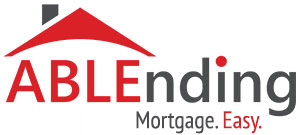How To Perform An Offset Mortgage Comparison
An offset mortgage comparison is not as straightforward as it would first seem. This article will give an overview of an offset mortgage and discuss how to compare offset mortgages to help you find the right one.
Offset mortgages are fairly new to the UK market place. They were introduced to the UK in the late 1990s and originated from Australia. They were seen as a niche product, but this has changed since interest rates have decreased and the market has opened up. The principle of offset mortgages is relatively simple – when a borrower takes out an offset mortgage, it is linked to their savings and/or current account. This allows the borrower to offset their mortgage debt against the money in their accounts, thus reducing the amount of interest owed. For example, if a borrower has a £250,000 mortgage and £50,000 in savings, interest will only be charged on the difference, i.e. £200,000.
The range of offset mortgages within the market place has increased in recent years and consequently, offset mortgages have becoming increasing complex. For an offset mortgage comparison, you can’t just compare the Annual Percentage Rate (APR) as you would with a traditional type of mortgage. The APR has limited value with an offset mortgage because nothing else is taken into account, such as the flexibility of the account, set-up charges, and Early Redemption Charges (ERC).
To obtain an offset mortgage comparison, it is important to look at the key aspects of an offset mortgage and to ask yourself – ‘what can my offset mortgage do for me?’ Key aspects include:
Flexibility of the account
Overpayments – are you likely to make frequent overpayments into your mortgage account? If so, you will want an offset mortgage that does not penalise for frequent overpayments or penalise you for paying off your mortgage early.
Underpayments and/or payment holidays – do you want a career break with underpayments or payment holidays from your mortgage? Not all offset mortgages offer underpayments or payment holidays, whereas some types of offset mortgage offer the service, but you usually have to make a certain amount of overpayments before you are eligible.
Credit limit – will you need a lump sum of cash in the future, for example, home renovations? Some offset mortgages allow a credit limit on top of the agreed mortgage, depending on the amount of equity in the property, which acts as a loan facility.
Debt – are you carrying credit debt and personal loans? Some offset mortgages allow the debt to be incorporated into the mortgage package, possibly leading to a lower repayment rate. The debts can also remain unsecured.
Number of accounts – can you add more than one savings/current account to your mortgage? Do you have family members that are willing to link their bank accounts to your mortgage debt? If so, you can further reduce your interest payments.
Charges and interest rates
At first glance, an offset mortgage with an initial low APR for two years and low arrangement fees may look appealing, but if it has an ERC and no underpayment facilities, it would not be suitable if you wanted to make frequent overpayments to pay your mortgage off early, but were planning to have a career break in the future.
There are many lenders in the mortgage market that offer different types of offset mortgages. To guide you through the intricacies of an offset mortgage comparison it would be best to seek advice. An independent mortgage broker can advise you and help you with an offset mortgage comparison to ensure you can have the best offset mortgage for your needs.

Leave A Comment